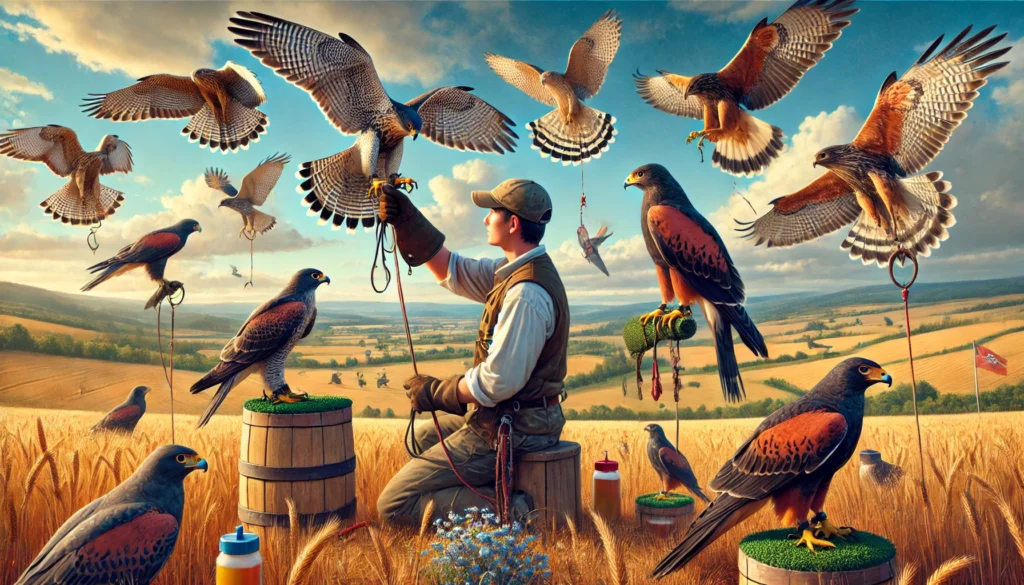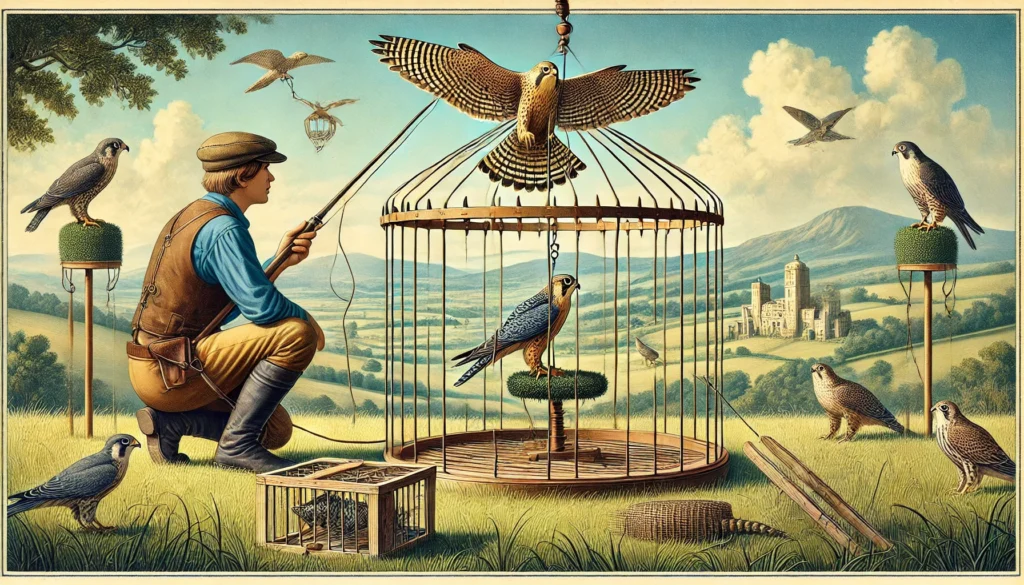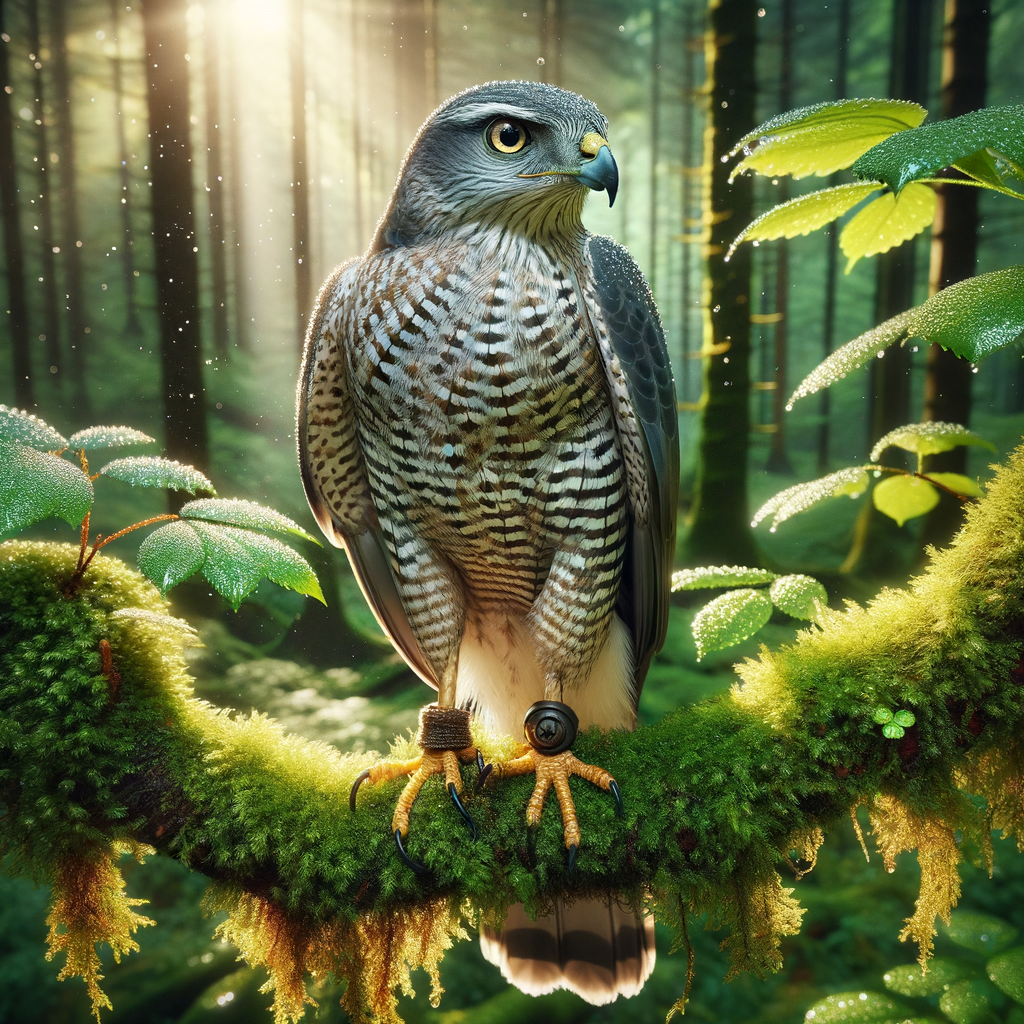Collaboration between Falconers and Scientists
- Falconry helps scientists understand bird behaviors.
- Scientists and falconers work together to protect bird species.
- Falconers help track bird health and movement.
- Sharing knowledge improves conservation efforts.
- Birds of prey are important indicators of environmental health.
- Data from falconers helps scientists study ecosystems.
- Training birds can aid in scientific research.
- Collaboration benefits both falconers and scientists.
By working together, both falconers and scientists can achieve more in understanding and protecting these amazing birds.
Bridging Talons and Science: A Winning Partnership
Imagine this: you’re hiking through the lush green hills of Ireland, where the wind whistles a gentle tune. Suddenly, you spot a magnificent falcon swooping gracefully across the sky. This breathtaking moment isn’t just a testament to nature’s beautyâit’s also a glimpse into a powerful collaboration. Just as Irish farmers and storytellers have passed down their knowledge through generations to preserve their rich culture, falconers and scientists are teaming up to protect and understand these incredible birds better.
At Learn Falconry, we’re passionate about the ancient art of falconry and believe in its immense value for modern science. In this article, we delve into the exciting ways that falconers and scientists are working hand-in-hand. From tracking migration patterns to ensuring the health and safety of falcon species, this partnership is crucial.
Keep reading to discover how this collaboration is helping to unravel the mysteries of these magnificent birds and contributing to the broader field of wildlife conservation. If you love falcons and enjoy learning about fascinating scientific endeavors, you’re in for a treat!
Unveiling the power of Falconry Science Collaboration: Falconers and Scientists Working Together
At Learn Falconry, we are excited to explore how the unique partnership between falconers and scientists enhances our understanding of these majestic birds. This collaboration-falconers-scientists helps in expanding knowledge and improving falconry practices worldwide. When falconers start working with scientists, they form strong research partnerships that can lead to fascinating discoveries.
The Essence of Falconry Science Collaboration
Falconry science collaboration is all about combining the expertise of falconers with scientific research methods to study falcons more effectively. Falconers bring extensive hands-on experience and practical insights, while scientists provide analytical skills and technological tools. This blend creates a rich environment for groundbreaking discoveries. By utilizing techniques from both worlds, this collaboration can advance the conservation and health of falcons.
Working with Scientists to Advance Falconry
Working with scientists, falconers can gather data more accurately. For instance, tracking and monitoring falcons’ behaviors in their natural habitats or during training sessions provides much-needed information. Scientists analyze these data, leading to new insights into falcon behavior, nutrition, and health. Want to learn more about training falcons? Check out our page on training a falcon.
Building Research Partnerships
Research partnerships between falconers and scientists are essential for advancing our understanding of falconry. By sharing their knowledge and resources, they can tackle complex questions about falcon biology and ecology. For example, scientists can use advanced equipment provided by falconers such as GPS trackers to gather precise data on falcon movements. This information is crucial for wildlife conservation and improving falconry techniques.
The Benefits of These Collaborations
These partnerships provide numerous benefits including enhanced health care for falcons, more effective conservation efforts, and the development of ethical falconry practices. They also promote sustainable falconry methods that ensure the wellbeing of falcons in the wild and captivity. Want to know more about ethical falconry? Visit our ethical falconry page.
Collaboration-falconers-scientists enables the implementation of innovative technologies to better understand and manage falcon populations. For example, using GPS telemetry allows for more detailed tracking of falcons, leading to new insights into migration patterns and habitat use. This data is invaluable for creating effective conservation strategies.
Learning and Growing Together
By engaging in these research partnerships, both falconers and scientists can learn from each other and grow in their respective fields. Falconers can adopt more scientific approaches to their practices, while scientists gain a deeper appreciation for the traditional methods used in falconry. This mutual learning process can inspire new ideas and innovations that benefit the entire falconry community.
If you’re passionate about the history and techniques of falconry, take a look at our comprehensive resources like the history of falconry and falconry techniques.
Involving the Falconry Community
These collaborations also encourage the broader falconry community to get involved in scientific research. By participating in citizen science projects, falconers can contribute valuable data that helps scientists better understand and protect falcon populations. This teamwork not only advances knowledge but also fosters a sense of community and shared responsibility among falconers and researchers alike.
Explore more about the role of falconry in conservation by visiting our page on falconry and conservation.
In conclusion, the collaboration between falconers and scientists represents a powerful alliance that drives progress in understanding and preserving falcons. By working together, they can overcome challenges and unlock new potential in the field of falconry, ensuring a brighter future for these magnificent birds.
Collaboration Between Falconers and Scientists: A Deep Dive
Welcome to the amazing world of collaboration between falconers and scientists! At Learn Falconry, located worldwide, we understand the importance of teamwork to benefit both avian conservation and human knowledge. How do falconers and scientists work together, you ask? Let’s explore some fascinating projects and examples that showcase this unique partnership.
Integrated Monitoring in Bird Conservation Regions (IMBCR) Program
The IMBCR program is an excellent example of teamwork between falconers, scientists, and other stakeholders. This collaborative effort pulls data from various sources to study bird populations at multiple scales. Here’s what it involves:
- Academic, Government, and Nonprofit Scientists: These experts define research questions and collect representative data.
- Long-Term Assessment: The program, running for 17 years, uses a statistically rigorous design to quantify population dynamics.
The table below summarizes some key features of the IMBCR program:
| Features | Description |
|---|---|
| Contributors | Academic, Government, Nonprofit Scientists |
| Duration | 17 years |
| Focus | Quantifying spatiotemporal population dynamics |
| Geographical Scope | Local to ecoregional scales |
| Methods | Statistically rigorous design |
Data Integration in Migration Research
Researchers are combining different types of data to understand the full annual cycles of migratory species better. Key factors in this collaboration include:
- Overcoming Methodology Limitations: Integrating various data types helps researchers understand migration patterns and challenges.
- Fostering a Collaborative Culture: Joint efforts among scientists help share insights and develop comprehensive understandings.
Public Engagement in Bird Research
Falconers and scientists are reaching out to the public using social science approaches. This involves:
- Long-term Engagement Goals: The objective is to demonstrate the competence of scientists and their willingness to help society.
- Measurable Outcomes: Sharing values with community members and engaging them in bird research and conservation.
Bioacoustics Research
Sounds made by birds are critical in understanding their behavior, ecology, and conservation status. Scientists and falconers analyze these sounds to gather information:
- Behavioral Insights: Bioacoustics helps decode bird behavior patterns.
- Conservation Status: Understanding the ecological roles and statuses of various species.
Peregrine Falcon Observations Database
One exciting example is the Peregrine Falcon Observations Database. This public dataset:
- Collects Information on Behavior, Habitat, and Population Dynamics: Falconers and scientists collect this valuable data.
- Accessible to Public: The data is freely available for use.
American Kestrel Partnership (AKP) Transition
The AKP’s community science program is now a part of NestWatch, a new platform that allows:
- Efficient Data Entry and Management: Observations can be submitted via smartphone apps or bulk uploads.
- Continental-scale Research: Scientists use the data to answer research questions on a broad scale.
Bird Banding and DNA Analysis
Research involving feathers and DNA samples plays a crucial role in understanding raptor populations. Here’s what it helps with:
- Genetic Diversity Studies: Analyzing genetic variance among bird populations.
- Tracking Movements: Understanding how environmental factors affect bird migrations.
Visualizing Collaborations and Outcomes
Below is a summary chart that visualizes collaborations and outcomes in falconry science:
| Collaboration & Program | Key Elements |
|---|---|
| IMBCR Program | Long-term data collection, academic and government participation |
| Data Integration in Migration | Overcoming methodology limits, fostering a collaborative culture |
| Public Engagement | Long-term goals, measurable outcomes |
| Bioacoustics Research | Behavioral insights, conservation status |
| Peregrine Falcon Observations | Public dataset, behavior and population dynamics |
| AKP Transition to NestWatch | Efficient data entry, broad-scale research |
| Bird Banding & DNA Analysis | Genetic diversity, tracking movements |
This journey into the collaborative efforts between falconers and scientists illustrates how working together yields remarkable results in avian research and conservation. Stay tuned as we delve deeper into each of these innovative and impactful projects!
The Power of Collaboration in Falconry and Science
In 2024, the collaboration between falconers and scientists has reached new heights, leading to remarkable advancements in bird conservation and research. Integrated programs like the IMBCR have fostered strong partnerships between academic scholars, government bodies, and nonprofit organizations, emphasizing the significance of collaborative efforts. Through the combination of diverse data types and innovative technologies, researchers are gaining comprehensive insights into migratory bird patterns, population dynamics, and genetic diversity.
Furthermore, public engagement has become a crucial aspect of bird conservation. By involving the community in scientific endeavors, such as through the American Kestrel Partnershipâs transition to NestWatch, scientists can gather valuable data while fostering a sense of shared responsibility in conservation efforts.
Technological innovations have also played a pivotal role. Bioacoustics research and advanced methods like bird banding and DNA analysis are providing deeper insights into avian behavior and ecology. These techniques are helping scientists track bird movements, understand the impact of environmental toxins, and ultimately protect endangered species like the Peregrine Falcon.
The trends for 2024 also highlight the growing importance of personalized communication, data-driven decision-making, and high-quality content in engaging the scientific community. By promoting ethical practices and sustainability, and utilizing video marketing and AI technologies, partnerships between scientists and other stakeholders can thrive.
In summary, the collaboration between falconers and scientists is essential for advancing bird research and conservation. By working together, we can make significant strides in understanding and protecting our avian friends, ensuring a brighter future for both the birds and our environment.
Common Questions About Collaboration Between Falconers and Scientists
-
Why do falconers and scientists work together?
Collaboration between falconers and scientists is essential for several reasons. Scientists study falcons to learn more about their behavior, biology, and health, which helps in conservation efforts. Falconers, who have extensive hands-on experience with these birds, provide valuable practical insights and data that can complement scientific research. Together, they work to ensure the health and sustainability of falcon populations. Learn more about the role of falconry in conservation. -
How do falconers contribute to scientific research?
Falconers contribute to scientific research by sharing their extensive knowledge and observations with scientists. They often help in tracking and monitoring wild falcon populations, providing data on migration patterns, breeding success, and health status. This hands-on data is crucial for understanding and protecting these birds. Falconers also collaborate in wildlife monitoring projects by providing their trained birds for various studies. -
What are some benefits of this collaboration for falconry?
The collaboration between falconers and scientists helps advance falconry techniques and promotes ethical practices. With scientific research, falconers can learn the latest in falcon health and nutrition, ensuring their birds are in optimal condition. Additionally, innovations in falconry equipment and training methods often stem from scientific studies, benefiting the entire falconry community. -
Can falconry assist with conservation efforts?
Absolutely! Falconry plays a significant role in conservation. Falconers have been involved in successful reintroduction programs where captive-bred falcons are released into the wild. They also support habitat restoration initiatives by ensuring that the natural habitats of falcons are preserved and protected. Explore more about conservation success stories involving falconry. -
What kind of research projects do falconers and scientists work on together?
Falconers and scientists work on various projects, including behavioral studies, health and disease research, and breeding programs. They also collaborate on projects like the reintroduction of falcons into areas where they have become extinct. These initiatives are vital for maintaining the biodiversity and ecological balance of different regions. To learn more about these collaborative projects, visit collaboration-falconers-scientists. -
How does technology aid this collaboration?
Technology plays a crucial role in the collaboration between falconers and scientists. Advanced telemetry systems, GPS trackers, and health monitoring tools allow for precise data collection and analysis. This technology helps in tracking migration patterns, health status, and the overall well-being of falcons. For more information on how technology is used in falconry, check out using-technology-falconry.
For more detailed historical context and methodologies, you can explore our resources on the history of falconry and modern falconry techniques.



